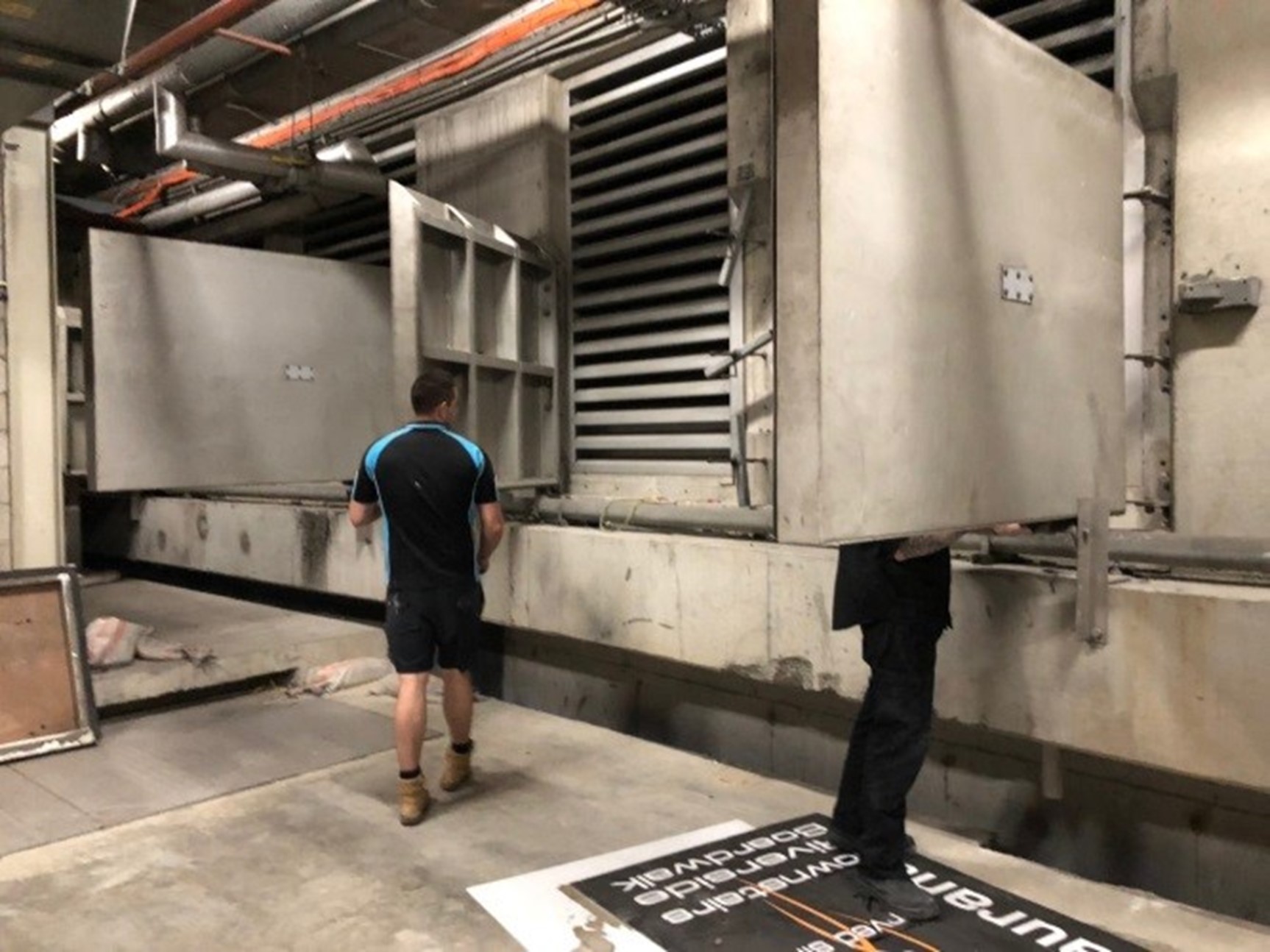One of the most significant physical climate change risks to GPT assets is riverine flooding, however this is very limited as only a small percentage of assets are located within a riverine flood zone.
Assets located in the Brisbane CBD are exposed to flood risk, and have been impacted by major flooding in the past. GPT has greatly reduced the assets’ vulnerability to future flooding by investing capital into mitigation procedures. In relation to other climate-change related developments, GPT’s diverse portfolio in a range of geographic locations limits our exposure to regional economies reliant on carbon intensive industries. Other GPT assets located in areas with growing flood risk have implemented other adaptation measures (see Building Climate Resilience into Development at 32 Smith).
Flooding of the Brisbane River in 2011 had a significant impact on the Riverside Centre and the development of One One One Eagle Street, causing almost $20 million dollars’ worth of damage, forcing closures and delaying construction works. To reduce the vulnerability to the impacts of future riverine flooding, significant investments in flood prevention were made in 2012 to both the Riverside Centre and the newly developed One One One Eagle Street. These riverside assets, which now have a combined valuation of over $1.9 billion, are examples of GPT’s long term approach to risk management that demonstrate resilience measures in adapting to the physical impacts of climate change. Flood mitigation undertaken included:
- Installation of a system of 28 floodgates, hatches and barriers to protect key equipment including basement substations, car park and loading dock areas
- Installation of isolation and reflux valves throughout the basement levels
- Extensive sewer and storm water diversion works
- Relocation of some essential services to higher levels in the buildings, and
- Implementation of an updated flood management plan, including twice-yearly drills which have taken place at both assets since 2012.
In late February 2022, the Brisbane CBD once again experienced major flooding. This time, however, the buildings and our team were well prepared with the flood mitigation measures in place. The flood mitigation processes were instrumental in keeping the office towers protected from flood waters and operational. Total losses were over 90 per cent less than the 2011 event, despite there being a second office tower on the site and more than double the lettable floor space when compared to 2011. Given the additional asset and building cost increases, it is possible that damages may have exceeded $50 million if no flood mitigation measures were implemented. Furthermore, tenants, customers, and visitors had constant access as a result of the fast response of the building management team, with full services such as electricity, water, and lifts remaining available throughout the flood event, strengthening GPT’s strategic position of a total focus on customer.
Moving beyond ensuring the resilience of its own assets to playing a role in the resilience of the Brisbane CBD and lowering vulnerability for others, the GPT management team has shared its learnings with other property owners. Extreme rain events that cause widespread flooding like these are unfortunately an increasing hazard under current projections, and highlight the value of climate risk reviews and adaptation investments in a warming climate. GPT will continue to develop its Climate Adaptation Plans like those at Riverside Centre and One One One Eagle Street to identify climate risks, optimise building performance, improve future resilience and exceed customers’ expectations.
